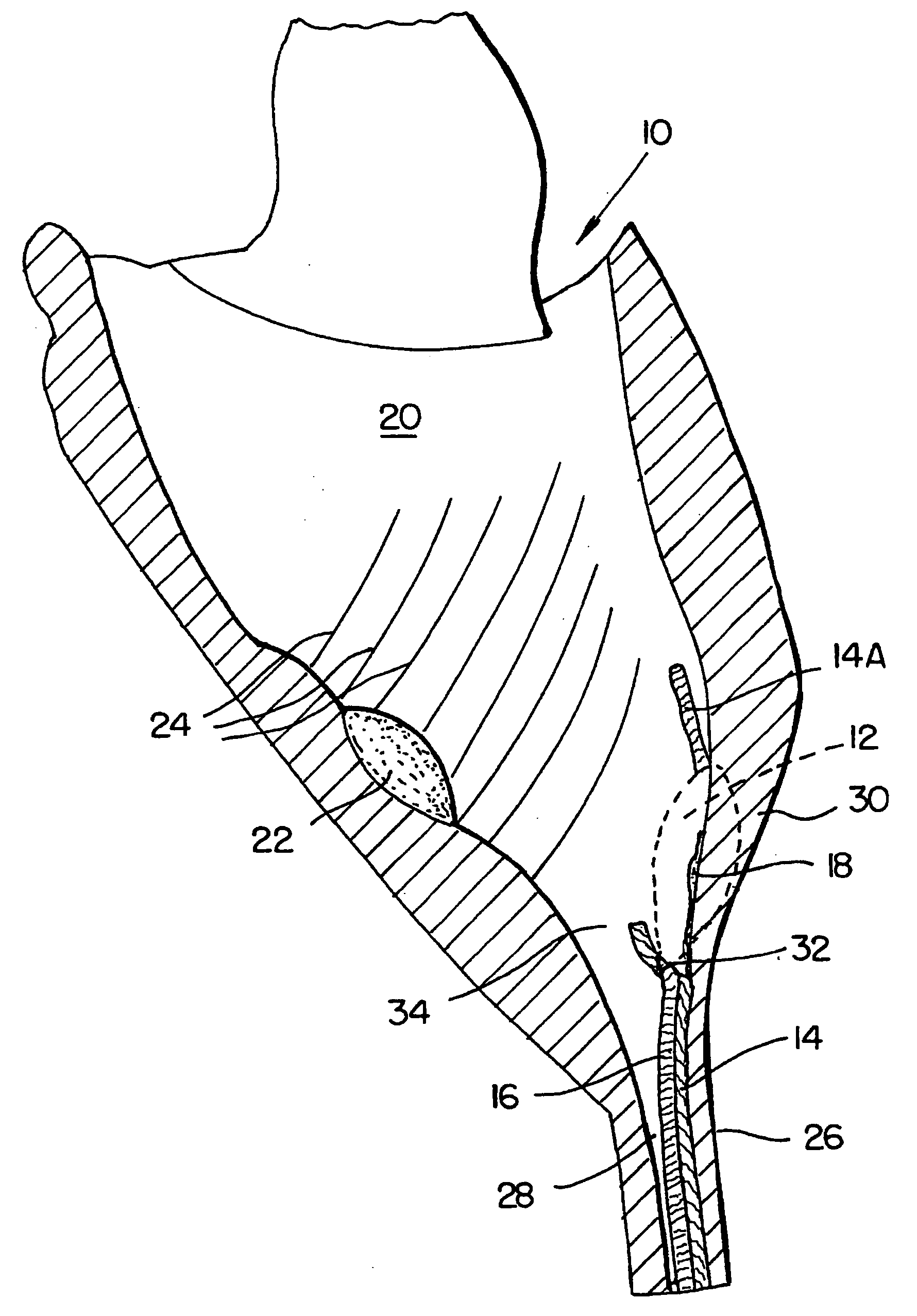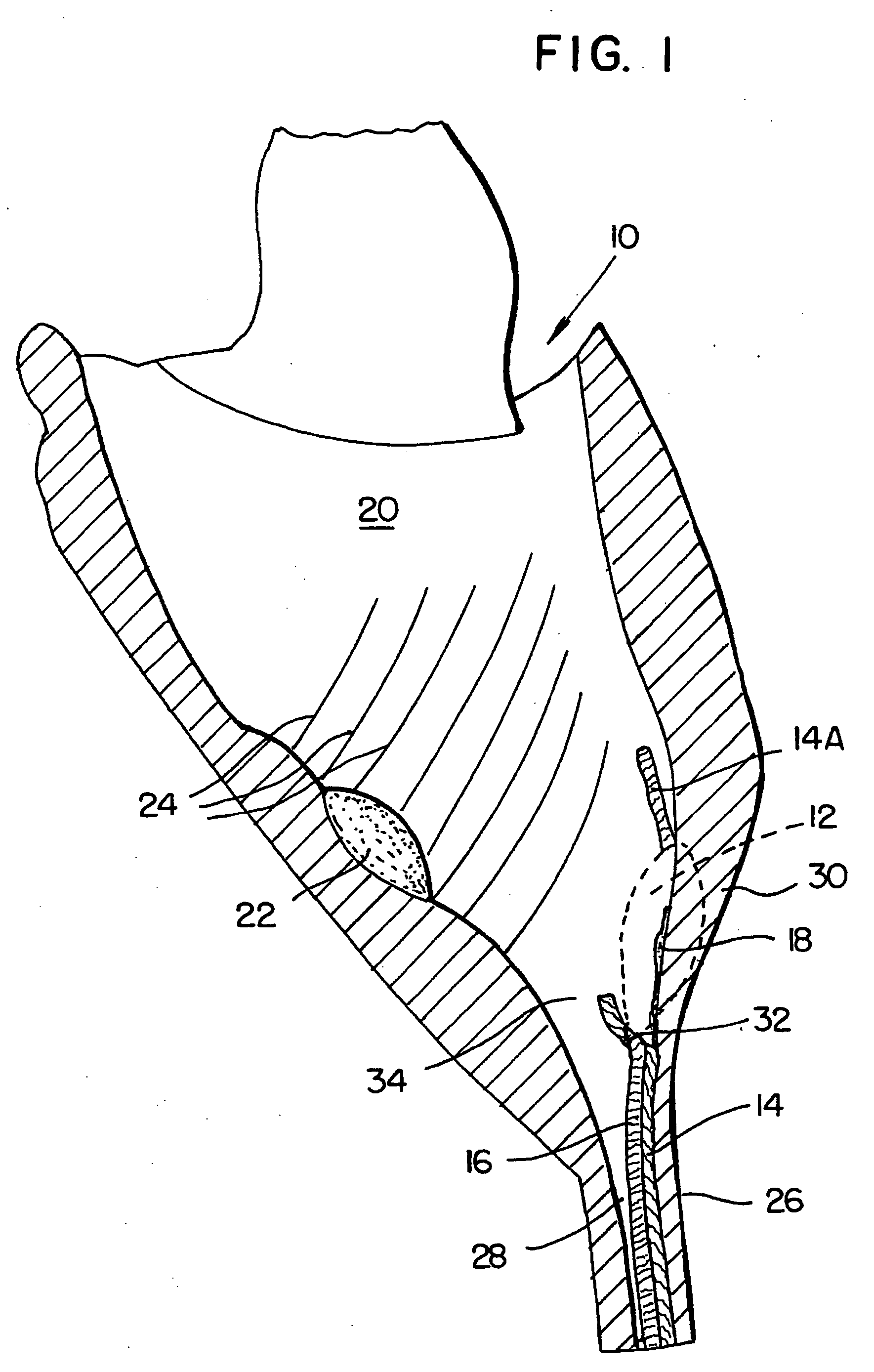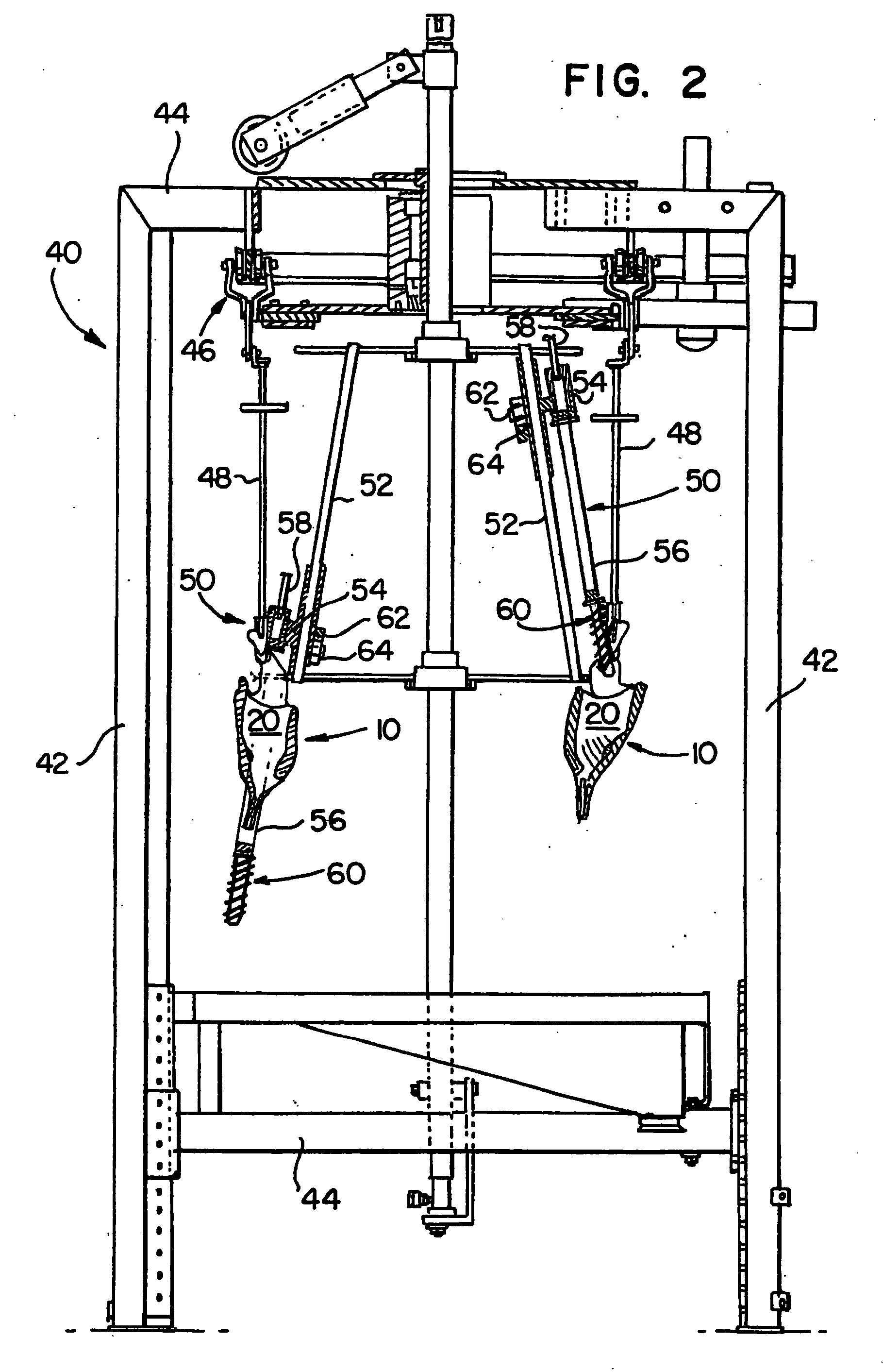Decropping tool and wrapped cam for use in food processing machinery
a technology of food processing machinery and cams, which is applied in the field of poultry processing devices, can solve the problems of loss of yield, additional problems in subsequent processing of carcasses, and potential damage to the rigid teeth of the probe, and achieves the effects of high degree of cam path accuracy, easy cleaning during or after operation, and easy manufactur
- Summary
- Abstract
- Description
- Claims
- Application Information
AI Technical Summary
Benefits of technology
Problems solved by technology
Method used
Image
Examples
Embodiment Construction
[0048] As required, detailed embodiments of the present inventions are disclosed herein; however, it is to be understood that the disclosed embodiments are merely exemplary of the invention, which may be embodied in various forms. Therefore, specific structural and functional details disclosed herein are not to be interpreted as limiting, but merely as a basis for the claims and as a representative basis for teaching one skilled in the art to variously employ the present invention in virtually any appropriately detailed structure.
[0049] Reference is made to FIG. 1 to allow a general description of the poultry carcass decropping operation contemplated by the instant invention. Carcass 10 (only a half section thereof being shown in FIG. 1) arrives at the decropping operation headless and defeathered. The carcass is in an upside-down orientation with the neck portion of the carcass facing the floor.
[0050] The stomach cavity previously has been cleaned of certain poultry parts, and th...
PUM
 Login to View More
Login to View More Abstract
Description
Claims
Application Information
 Login to View More
Login to View More - R&D
- Intellectual Property
- Life Sciences
- Materials
- Tech Scout
- Unparalleled Data Quality
- Higher Quality Content
- 60% Fewer Hallucinations
Browse by: Latest US Patents, China's latest patents, Technical Efficacy Thesaurus, Application Domain, Technology Topic, Popular Technical Reports.
© 2025 PatSnap. All rights reserved.Legal|Privacy policy|Modern Slavery Act Transparency Statement|Sitemap|About US| Contact US: help@patsnap.com



